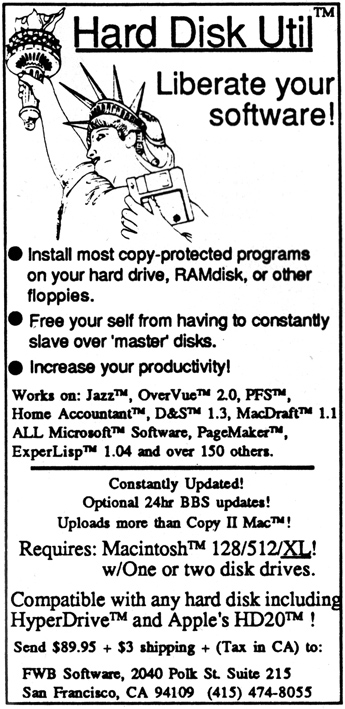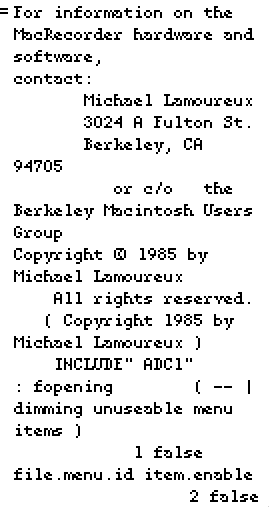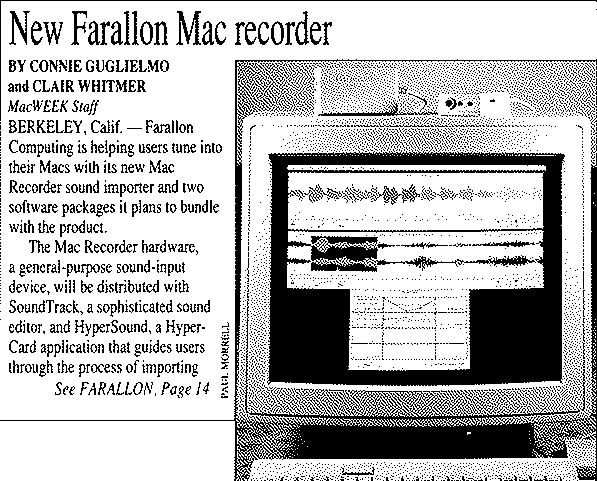BMUG Lab in UCB Eshleman Hall
358 words
4K on disk
March 1986
 BMUG Lab in UCB Eshleman Hall
BMUG Lab in UCB Eshleman Hall
The Spring 1986 BMUG Newsletter showcases a plan to build a computer lab in Eshleman Hall, the Student Union on the UC Berkeley campus. I’ll reproduce the layout of the lab below, because I think it’s an interesting snapshot of what people thought a lab of Macs should look like at this early point in the computer’s development.

Some things to note:
1) This is a network-centric facility. Two UNIX machines with Ethernet, and a Kinetics AppleTalk Bridge, showed the importance of connecting the Mac’s own LocalTalk technology to the campus backbone. The author of the article, BMUG co-founder Reese Jones, would go on to start Farallon Networking at least in part on the strength of BMUG’s own PhoneNet technology, which replaced Apple’s expensive proprietary cables with cheap phone cabling.
2) There’s a BMUG Reference Library. Presumably this would contain the user group’s own newsletters, along with product manuals and third-party books. If you had a question about how to do something on a computer in 1986, you usually looked it up in a book.
3) Not only would books be stored in the computer lab, but they’d be produced there, too. BMUG specifies that the forthcoming lab will serve as a “resource center for document preparation.” By 1986, Aldus PageMaker had been out for a year, and Desktop Publishing was driving the Mac’s success. A networked Apple LaserWriter Plus (price: $7,000) was shared among all the computers in the lab, offering users output that would have been prohibitively expensive otherwise.
4) Centram’s TOPS (also a Berkeley company) was the file- and printer-sharing solution — because AppleShare didn’t exist yet. TOPS would be a great topic to cover in a future article — it was sort of like Personal File Sharing, and ran on both the Mac and PC (with a LocalTalk ISA card, as Reese’s Eshleman Hall layout specifies).
I’m not sure if this computer lab was ever built — Eshleman did host the Open Computer Facility for a number of years, but I don’t know if the BMUG lab grew into that. The building itself is slated to be demolished in the next few years.



